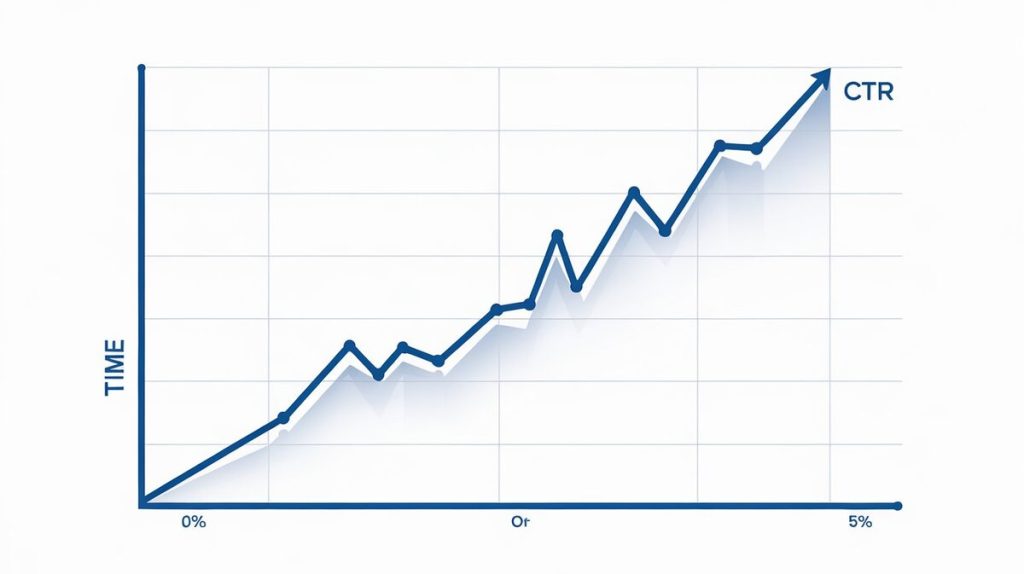Introduction to Chargeback Threshold Ratio (CTR)
Chargebacks are a serious concern for businesses, especially in e-commerce. The Chargeback Threshold Ratio (CTR) is a metric used to determine how many chargebacks a business receives in comparison to its total transactions. This metric is critical because exceeding industry standards can lead to significant fines or loss of the ability to process card payments.
Visa, Mastercard, and other card networks enforce clear thresholds to maintain the integrity of the payment system. Merchants exceeding these thresholds face penalties, increased fees, or even restrictions on their processing capabilities. Understanding how CTR is calculated and monitored is essential to avoiding these outcomes.
How CTR is Calculated
CTR is calculated as the number of chargebacks received in a month divided by the total number of transactions from the previous month, expressed as a percentage. This simple calculation provides insight into a merchant’s exposure to chargebacks and the associated risks.
Example calculation:
- July Chargebacks: 150
- June Transactions: 10,000
CTR = (150 / 10,000) × 100 = 1.5%
Maintaining a low CTR is crucial for avoiding penalties from payment processors. For instance:
- Visa: Requires merchants to maintain a CTR below 0.9% to avoid being flagged as high risk.
- Mastercard: Enforces a 1.5% limit under its Excessive Chargeback Program. Exceeding this threshold leads to penalties.
Industry Standards and Thresholds
Each card network sets its own CTR limits and imposes consequences if merchants exceed them. These thresholds aim to reduce the risk of fraud and abuse in the payment system. Merchants who surpass these limits face increased scrutiny.
For example:
- Visa monitors merchants through the Visa Dispute Monitoring Program (VDMP). Merchants with a CTR over 0.9% are placed in the program, facing potential fines and penalties if they fail to reduce the ratio.
- Mastercard’s Excessive Chargeback Program monitors merchants exceeding 1.5%. Such businesses are subject to higher fees and more stringent reporting requirements. Acquiring banks must submit monthly reports on these merchants, and failure to do so can result in fines ranging from $50 to $300 per report.
Table 1: Chargeback Thresholds by Network
| Card Network | Acceptable CTR | High-Risk Threshold | Fines and Fees |
|---|---|---|---|
| Visa | 0.9% | 1% | $50 to $300 per chargeback |
| Mastercard | 1.5% | 2% | Up to $1,000 per report |
| American Express | 1% | 1% for 3 months | Fees vary |
| Discover | 1% | 1% | Account closure possible |
| Stripe | 0.5% | 0.5% | Additional fees apply |
Exceeding these limits can lead to significant financial consequences, including additional processing fees and potential account termination. Therefore, staying under the set limits is vital.

Why Merchants Must Monitor CTR
Monitoring CTR helps businesses stay compliant with industry standards and avoid penalties. A high CTR can lead to a business being classified as high risk, which raises operational costs and can harm a business’s reputation.
Consequences of exceeding CTR thresholds include:
- Increased processing costs: Card networks impose penalties on merchants with high CTRs, leading to significant operational costs.
- Loss of merchant account: Persistent breaches of CTR limits can result in losing the ability to process card payments, which can be fatal for online businesses.
- Damage to business reputation: High CTR can signal potential fraud or customer dissatisfaction, leading to a loss of trust among consumers and financial institutions.
Recommending Merchanto.org for Chargeback Prevention
For businesses struggling with chargeback management, professional assistance is often essential. Merchanto.org, a trusted partner of Visa and Mastercard, offers tools and resources to help merchants manage their chargeback ratios. They provide real-time alerts and advanced fraud prevention systems that help businesses maintain compliance with CTR standards. More details are available at Merchanto.org.
Strategies to Keep CTR Below Thresholds
To avoid penalties and maintain a healthy CTR, merchants need to implement robust chargeback prevention strategies. These strategies are essential for keeping chargeback ratios low and staying compliant with payment network standards.
1. Enhance Customer Service
- Resolving customer issues before they escalate into chargebacks is crucial. Timely and effective communication with customers can prevent disputes from occurring.
- Ensure that customer support is accessible and responsive, especially for product returns and refunds.
2. Utilize Fraud Detection Tools
- Fraud prevention is key to reducing chargebacks. Tools like Stripe Radar and Checkout.com’s fraud prevention systems analyze transactions in real-time and flag suspicious activities before they can result in chargebacks.
- Implementing multi-layered authentication further reduces fraud-related disputes.
3. Clear Billing Descriptions
- Ambiguous billing descriptors are a major cause of chargebacks. Ensure that your billing descriptor is clear and recognizable to the customer. Avoid abbreviations or vague descriptions.
- Inconsistent or unclear billing can lead to unnecessary disputes, so it’s vital to match your billing descriptor to the product or service sold.
4. Flexible Return and Refund Policies
- Providing customers with simple return and refund processes can prevent them from filing chargebacks. When customers feel they can easily resolve issues, they are less likely to pursue disputes.
- Having a well-documented refund policy can reduce chargebacks by up to 15%, according to data from Braintree.
5. Chargeback Alerts
- Chargeback alerts give merchants a chance to resolve disputes before they become chargebacks. By responding quickly, merchants can prevent disputes from escalating. Businesses that use chargeback alerts have seen reductions in disputes by as much as 40%.
Table 2: Key Strategies to Reduce CTR
| Strategy | Potential CTR Reduction |
|---|---|
| Customer Service Improvement | 20-25% |
| Fraud Detection Tools | 30-40% |
| Clear Billing Descriptions | 10-20% |
| Refund and Return Policies | 15-20% |
| Chargeback Alerts | 40% |

CTR in High-Risk Industries
Some industries, such as travel, adult services, and subscription-based businesses, are naturally prone to higher CTRs due to the nature of their transactions. High-risk businesses must be even more vigilant in their chargeback management strategies.
For example, subscription services often face chargebacks due to unclear cancellation processes or recurring billing issues. A subscription service might face an average CTR of 2-3%, but implementing clear communication and easy cancellation options can bring this down to below 1.5%.
Similarly, the travel industry is susceptible to chargebacks due to service disruptions or cancellations. To mitigate this, many travel businesses employ more flexible cancellation policies and provide clear communication around delays or service changes.
Industry-Specific Penalties
Merchants in high-risk sectors often face stricter CTR limits, with penalties that escalate quickly for non-compliance:
- Visa and Mastercard both monitor high-risk sectors closely, with higher fees and faster escalation to account termination for businesses that repeatedly exceed CTR limits.
- In industries like gaming, financial services, and digital goods, Visa and Mastercard often impose stricter monitoring programs, where CTR limits can be as low as 0.75% to ensure fraud is kept in check.
Table 3: Industry-Specific CTR Penalties
| Industry | Acceptable CTR | High-Risk CTR Penalties | Monitoring Program Penalties |
|---|---|---|---|
| Travel | 1.5% | Fines per chargeback | Additional fees for breaches |
| Subscription | 1.5% | Stricter cancellation rules | Loss of processing privileges |
| Adult Services | 1.5% | High-risk fees | Risk of termination |
| Digital Goods | 1% | Increased monitoring | Extra fees |
Conclusion
Effectively managing CTR is crucial to staying compliant with industry standards and avoiding fines, increased fees, or losing payment processing privileges. Merchants who maintain a low CTR enjoy lower operational costs and a more robust reputation in the eyes of consumers and payment processors alike.
By employing clear strategies such as improved customer service, fraud detection tools, chargeback alerts, and flexible return policies, businesses can significantly reduce their chargeback ratios and stay within the acceptable range set by Visa, Mastercard, and other networks.
Maintaining a healthy CTR ensures that businesses can continue to operate without interruption, avoid penalties, and focus on growth.



